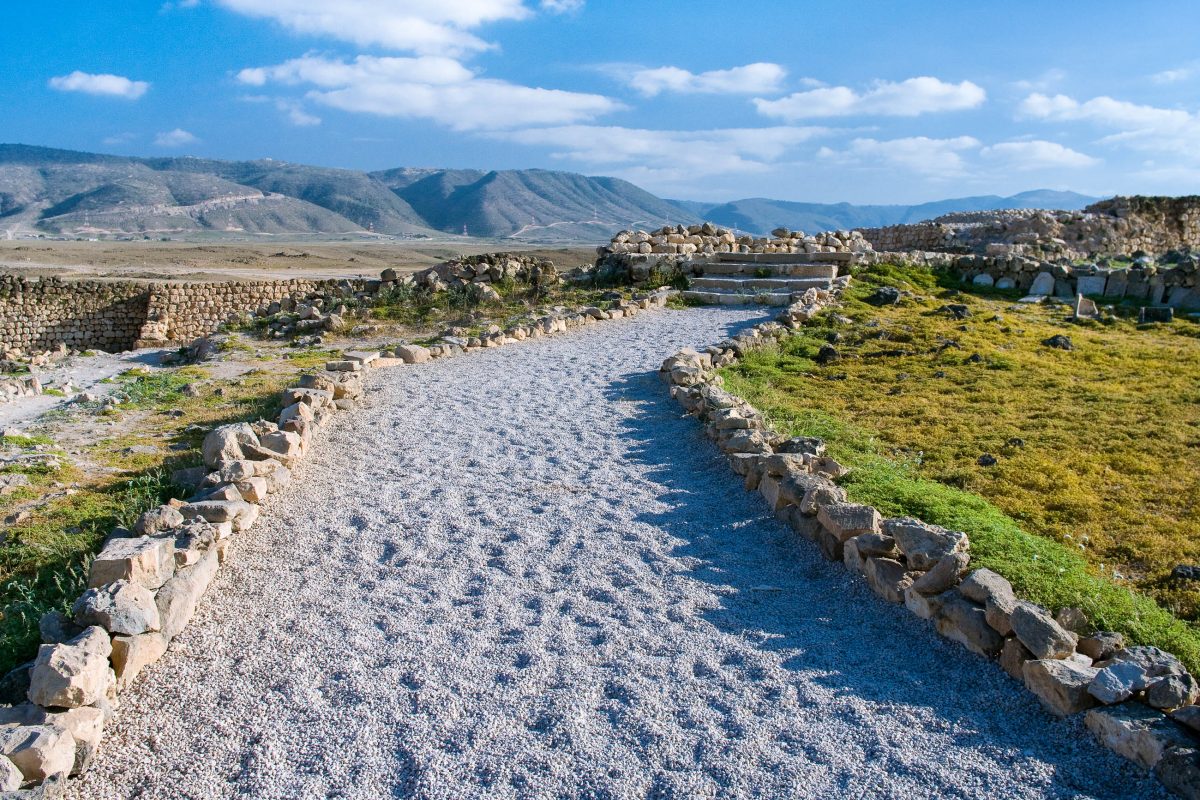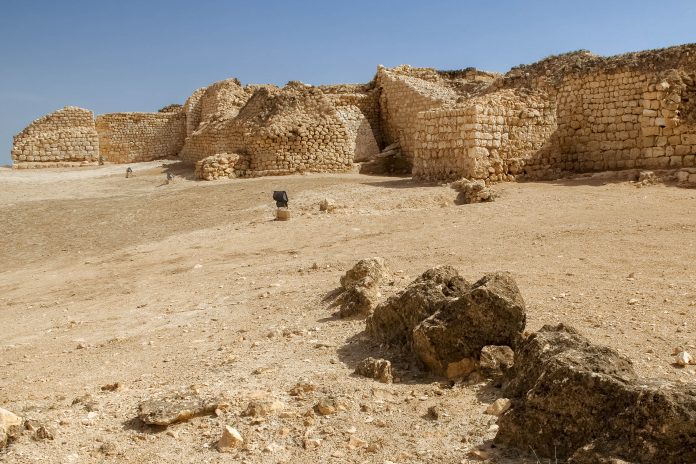Der antike Weihrauchhafen Sumhuram liegt 40km östlich von Salalah. Als Teil der Weihrauchstraße war Sumhuram einst eine blühende Handelsstadt, von deren Vergangenheit heute nur noch Ruinen zeugen.
Wer die antike Stätte Sumhuram (auch unter dem Namen Samhuram oder Samharam bekannt) im südlichen Oman besucht, taucht in die vergangene Welt der arabischen Weihrauchstraße ein. Sumhuram ist jener Hafen, der in griechischen Schriften als „Moscha“ an der „sachalitischen Küste“ auftaucht. Unter der Bezeichnung „Land of Frankincense“ („Land des Weihrauchs“) zählt Sumhuram gemeinsam mit anderen Stätten an der Weihrauchstraße zum Weltkulturerbe der UNESCO.
Inhaltsverzeichnis
Geschichte von Sumhuram
Sumhuram (auch unter dem Namen Samhuram oder Samharam bekannt) wurde im 5. oder 4. Jahrhundert vor Christus durch Lliazz Yalt I., dem König des großen altarabischen Reiches Hadramaut (der heutige Jemen), gegründet. Der Herrscher wollte mit diesem Lagerplatz und Exporthafen den Weihrauchhandel von Dhofar nach Indien, der auch über die Häfen von Mughsayl, Mirbat, al-Bhaleed und Raysut lief, lückenlos kontrollieren.
Der Plan des Königs ging auf, die Weihrauchstraße war damals völlig in seiner Hand und der Rubel rollte. Bald entwickelte sich Sumhuram zu einem bedeutenden Gewürzhafen, bis sie etwa drei- bis vierhundert Jahre nach Christus von den Himyaren erobert und schließlich aufgegeben wurde.
Entdeckung von Sumhuram

Vor der Herrschaft von Sultan Qaboos, die 1970 begann, war der Oman vom Rest der Welt völlig abgeschottet und kaum ein Ausländer befand sich im Oman. Daher konzentrierten sich die Forscherteams eher auf die umliegenden Länder wie Jemen oder Iran. Die ersten archäologischen Funde im Oman wurden erst in den 1950er-Jahren durch Zufall von europäischen Erdölarbeitern oder Soldaten gemacht.
Erst nach dem Amtsantritt von Sultan Qaboos, der den Oman zu einem modernen und fortschrittlichen Land machen wollte, wurde das erste Institut für die Erforschung der omanischen Geschichte gegründet. Neben Sumhuram wurden noch weitere archäologische Stätten, wie zum Beispiel der antike Weihrauchhafen al-Bhaleed, die Bienenkorbgräber von Baat und Al Ayn oder die legendäre Stadt Ubar in der Nähe von Shisr, entdeckt.
Bei den ersten Grabungen in den 1950er- und 1960er-Jahren tauchten unter anderem die Schrifttafeln mit altsüdarabischen Buchstaben auf, die auf die Gründungsgeschichte von Sumhuram schließen ließen. Die Inschriften sind heute im Museum von Salalah zu besichtigen. 1997 wurden die Ausgrabungen durch ein italienisches Forscherteam fortgesetzt.
Besichtigung von Sumhuram
Sumhuram bedeutet übersetzt etwa „die Anlage ist imponierend“ und tatsächlich zeugen die doppelt ummauerten Überreste der arabischen Stadt Sumhuram heute noch von der einstigen Größe der Handelsstadt.
Die Steine, mit denen Sumhuram erbaut wurde, sind nur mäßig behauen, was darauf hindeutet, dass Sumhuram in aller Eile errichtet wurde. Die ehemals schneeweißen Kalksteinblöcke sind mittlerweile fast schwarz gefärbt. Die Ruinen von Sumhuram sind zwar weniger eindrucksvoll als jene in al-Bhaleed dafür akribischer restauriert und in eine malerische Umgebung eingebettet.
Sehenswürdigkeiten von Sumhuram
Sumhuram ist von einer bis zu 3m dicken Stadtmauer umgeben, die zur Blütezeit der Stadt 10m hoch war. Gleich hinter dem Eingangstor fällt der Blick auf ein großes Gebäude. Dieser Tempel war vermutlich dem Mondgottt Sin geweiht, der damals im Jemen verehrt wurde. Die Reste von Wasseranlagen und Opferaltären sind heute noch zu sehen. Die Säulenreste am südlichen Ende des Hügels stützten einst gewaltige Lagerräume, in denen die Vorräte an Weihrauch und anderen kostbaren Gewürzen aufbewahrt wurden.
Die Wege durch den archäologischen Park von Sumhuram sind mit Erklärungstafeln versehen und am Eingang kann eine Broschüre mit Hintergrundinformationen erstanden werden. Von der Ausgrabungsstätte hat man außerdem einen guten Blick auf den idyllischen Meeresarm Khor Rori, der von einer Vielzahl an Vögeln bevölkert wird und zu den schönsten Lagunen der Dhofar-Region zählt.





